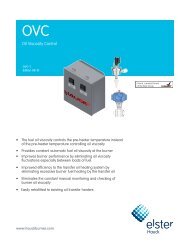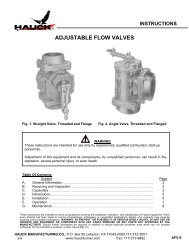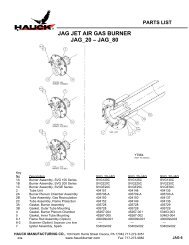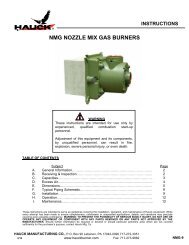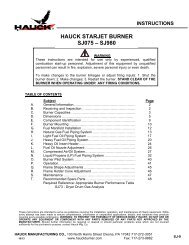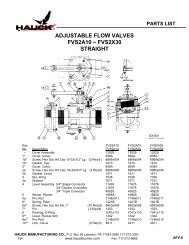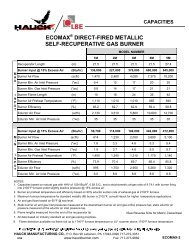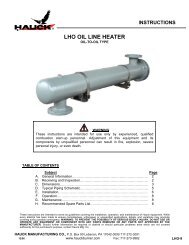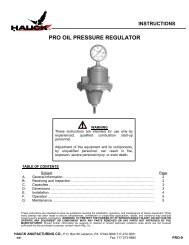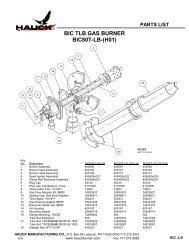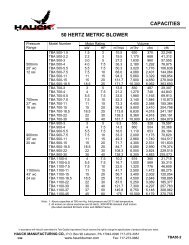HAUCK LONG NOSE STARJET BURNER LNSJ360 â LNSJ980
HAUCK LONG NOSE STARJET BURNER LNSJ360 â LNSJ980
HAUCK LONG NOSE STARJET BURNER LNSJ360 â LNSJ980
- No tags were found...
Create successful ePaper yourself
Turn your PDF publications into a flip-book with our unique Google optimized e-Paper software.
5. The piping from the gas regulator outlet to the burner gas manifold should be sized tominimize pressure losses.6. Check blower rotation. The impeller should rotate toward the blower discharge.7. Inspect and operate the plant exhaust damper control. The exhaust damper should becapable of maintaining a consistent negative pressure at the drum front bulkhead ofnegative 0.2 to negative 0.5 "wc (negative 5 to negative 13mm wc) from low to high firingrates for most applications.8. Install a gas sampling probe in the dryer rear plate (see Application Sheet GJ73).9. Set the low gas pressure switch to an initial setting of 0.5 psig (3.4 kPa).10. Set the high gas pressure switch to an initial setting of 5 psig (34.5 kPa).Page 15LNSJ -911. Complete the initial adjustment of the gas butterfly valve as follows: The valve is factory setto travel 90 degrees from position 1 to position ‘Run’. This travel can be modified to increaseor decrease low fire by choosing a lower or higher starting point.12. Open all manual shutoff valves in the gas line upstream of the gas pressure switch.WARNINGAdjustment of this equipment and its components byunqualified personnel can result in fire, explosion, severepersonal injury, or even death.13. Start gas flow to the gas manifold.14. Adjust the gas regulator until the pressure gauge upstream of the main gas automatic shutoffvalves indicates a pressure of 2 psig (13.8 k Pa).15. High fire can be modified by increasing or decreasing gas pressure. After setting high firegas pressure, low fire must be rechecked. Refer to individual Burner Gas Orifice MetersGraph for gas flows through the gas orifice meter (see Figure 10).16. Burner flame adjustment spin vanes can be set at 0 to 60 degrees; 0 degrees narrows theflame, 60 degrees widens the flame, and 30 degrees is a nominal starting point.17. Burner air adjustments: (see Section P).18. Recheck all linkages for tightness.19. Install a U-tube manometer across the gas orifice meter taps.20. Connect a gas analyzer to the gas sampling probe.21. Exhaust gas readings should be taken with the burner firing at operating tonnage(see Application Sheet GJ73).



